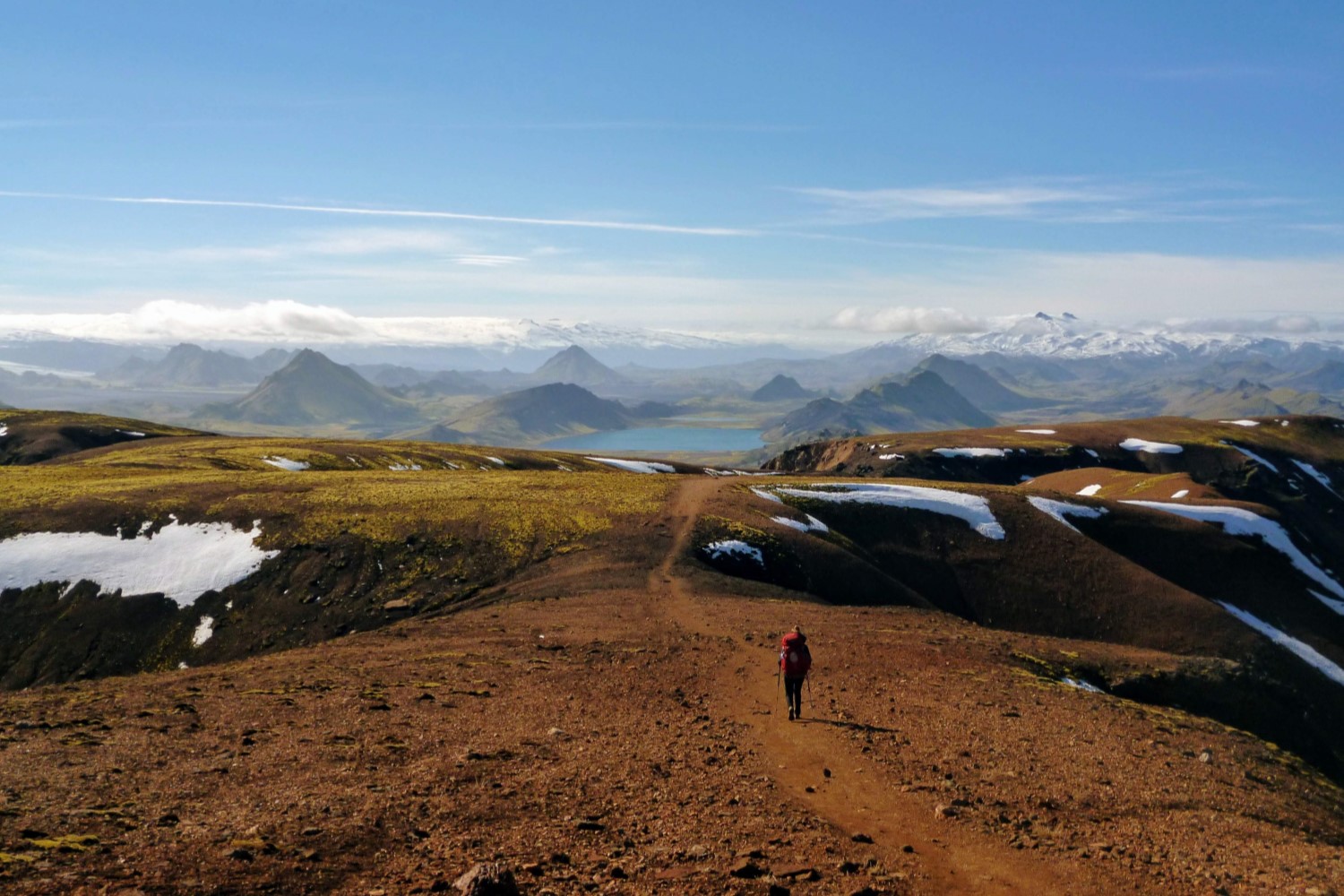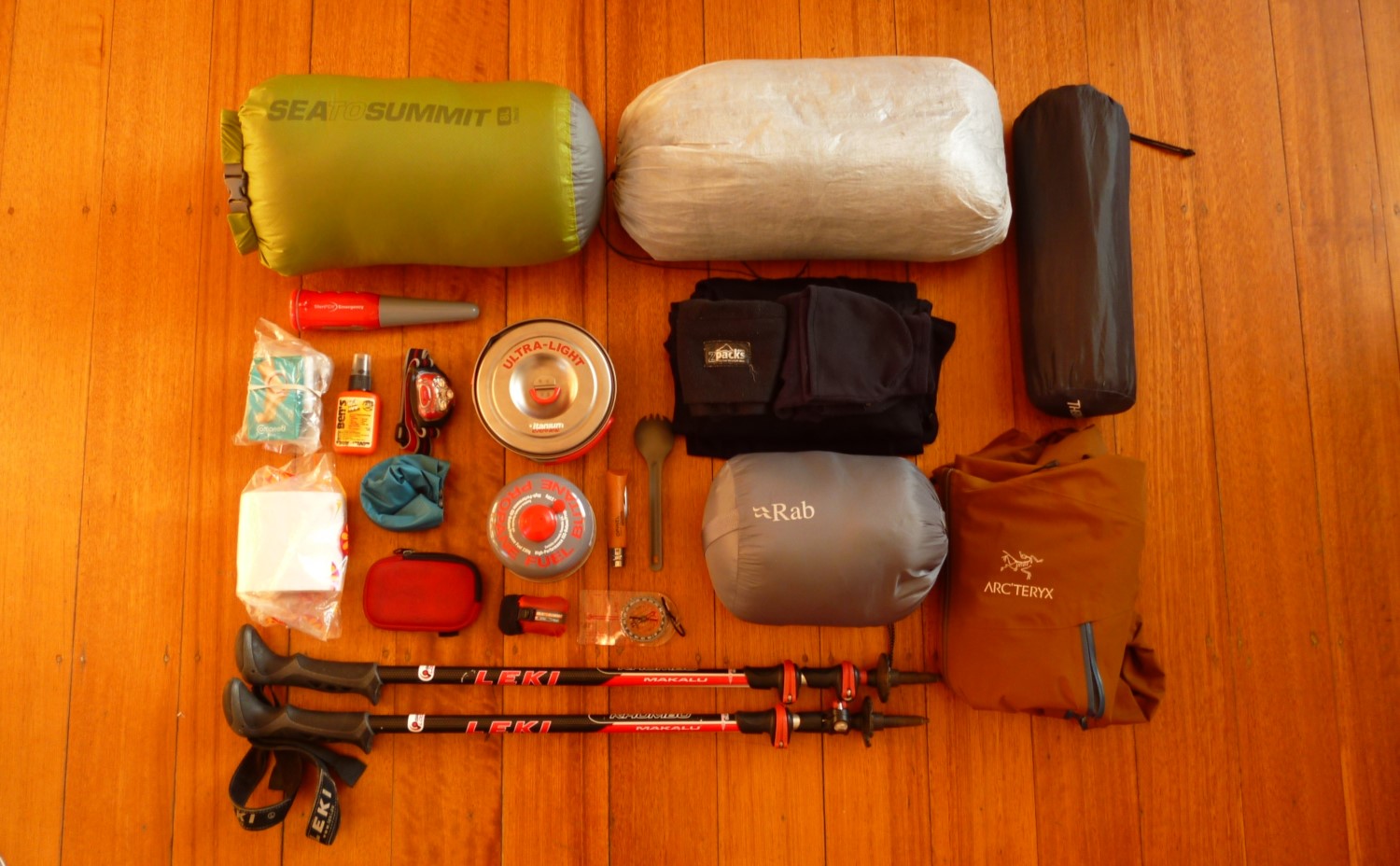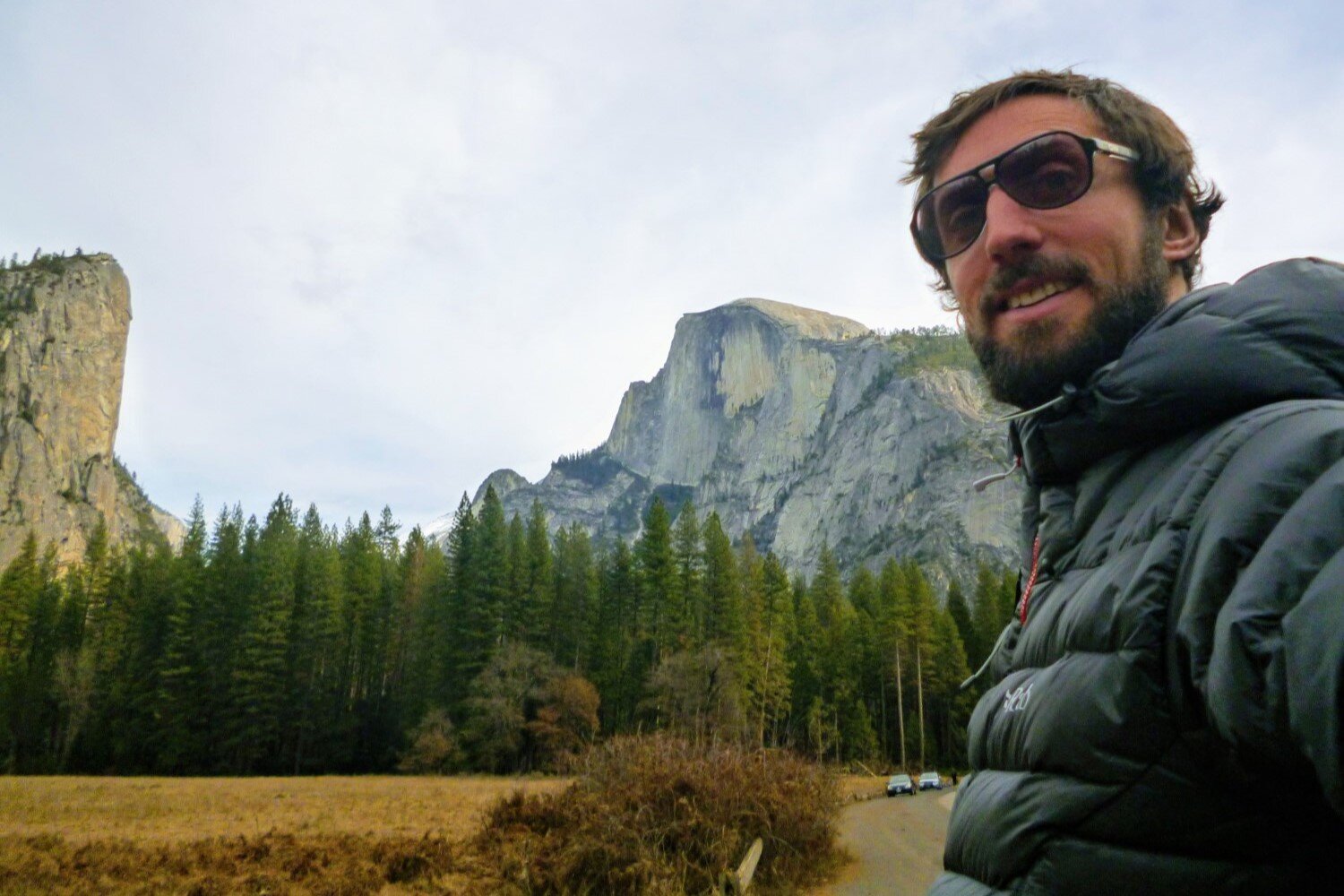HAMMOCK GEAR ECONOMY BURROW Review
JUMP TO: SPECS / PROS & CONS / INSULATION / FABRICS / FOOTBOX / BODY / COLLAR / ACCESSORIES / FINAL THOUGHTS
Author: Sam Brilleman
Hammock Gear are a cottage manufacturer of ultralight backpacking gear. They have been making sleep systems — primarily hammocks, shelters, and sleeping insulation for over a decade.
Their Economy Burrow is a competitively priced, high quality, ultralight backpacking quilt. If you are looking for an ultralight backpacking quilt from a reputable brand — and cost is an important consideration — then the Hammock Gear Economy Burrow should be one of the quilts at the top of your list. In this review I look at it in detail, to help you out with your purchasing decision.
The Economy Burrow is the less customizable and more cost-competitive sibling of Hammock Gear’s Premium Burrow. The lower price point of the Economy Burrow, relative to the Premium Burrow, is primarily achieved through two main distinguishing features:
An 800 fill power duck down for the insulation, instead of the higher 850/950 fill power goose down found on the Premium Burrow;
A 20-denier shell and liner fabric, as opposed to the higher-end ultralight 10-denier shell fabrics found on the Premium Burrow.
But what does this all matter? Well, essentially it comes down to warmth for weight.
Taken together, these two factors lead to an approximate 3 to 6 ounce weight penalty when comparing an Economy Burrow and a Premium Burrow at the same warmth rating — a weight penalty that might be perfectly acceptable when you consider you will be saving something in the order of USD $100!
QUICK SPECS
The following specs are listed for the standard length, wide width, 20°F quilt with zippered footbox and no down overfill.
TEMP RATING: 20°F / -6°C (0°F, 10°F, 30°F and 40°F also available)
FILL TYPE: RDS certified DWR treated duck down
FILL POWER: 850
FILL WEIGHT: 16.1 oz / 455 grams
TOTAL WEIGHT: 26.1 oz / 739 grams
INCLUDED ACCESSORIES: Non-waterproof stuff sack, Cotton storage bag
OPTIONAL ACCESSORIES: Pad attachment kit ($3), Draft plug for zippered footbox ($10), Down hood ($80-100)
PROS
Competitively priced ultralight backpacking quilt
Premium quality manufacturing
20-denier fabric is more durable than ultralight 10-denier
Optional overfill (which can help improve lifespan)
CONS
A few ounces heavier than quilts using top of the line 900+ fill power down
Can be lead times of several weeks (but usually willing to accommodate deadlines if required)
INSULATION
FILL POWER: The Economy Burrow uses a DWR treated 850 fill power duck down. An 850 fill power is at the lower end of the range of “premium” backpacking quilts (e.g. some premium quilts use 900 or 950). Having said that, the higher the fill power the higher the cost. So by choosing to use 850 fill power down, Hammock Gear are able to offer the Economy Burrow at a more competitive price point than their Premium Burrow (which uses 900 or 9500 or their competitors who use 900+ fill powers.
DUCK vs GOOSE: Duck down is also likely less expensive to source, and so the use of duck down in place of goose down also provides a reduction in costs. Amongst premium ultralight backpacking quilts, duck down is less common. But this is generally because geese — being larger birds — have down plumes that are larger and more lofty and therefore the highest fill power down is sourced from geese.
If you are buying a backpacking quilt with 900 fill power — it will almost certainly be goose down. But as seen in the Economy Burrow, if you are buying a backpacking quilt with a slightly lower 800 or even 850 fill power — that can be achieved using either duck or goose down.
LIFESPAN: Aside from the fill power, there are some suggestions that duck down might not have the same lifespan as goose down, but I personally can’t comment on that being the case. To date, my Economy Burrow has been perfectly lofty, and I haven’t seen any indication of that changing any time soon!
OVERFILL OPTIONS: If you are worried about the performance of the duck down over time, Hammock Gear provide the option for between 1 and 4 ounces of overfill (at an additional cost), which can help extend the lifespan of your quilt by preventing the loss of loft in the baffles over time.
FABRICS
SHELL & LINER: The Economy Burrow is made with a 20-denier nylon taffeta (for both the shell and liner fabric), with a fabric weight of 1.1 oz / yd². For comparison the Premium Burrow uses a 10-denier ripstop nylon and/or nylon taffeta, with a fabric weight of 0.67 oz / yd².
In other words the material used on the Economy Burrow is slightly heavier in both thread thickness and overall fabric weight. In theory, the 20-denier should be slightly more durable — but with reasonable care, both quilts should last a long time.
Plus, with the Economy Burrow I’ve not yet had any issues with down leakage — which has been something I’ve found in the past with backpacking quilts using a 10-denier fabric.
“AGAINST THE SKIN” FEEL: No ultralight materials are amazing to sleep with directly against your skin — they aren’t your home linen cotton sheets after all — but the liner material on the Economy Burrow is soft enough for me to be relatively happy sleeping without a baselayer in warmer weather.
DWR TREATMENT: The fabrics are treated with a durable water resistant (DWR) finish, to help prevent moisture getting through the shell fabrics and into the down. This isn’t the same as waterproof, so you still need to be careful not to get your gear wet, but it nonetheless can help prevent things like condensation (e.g. dripping from the tent roof onto the quilt whilst sleeping) getting through to the insulation.
Of course, in truly damp or wet conditions you may want to provide additional moisture protection to the footbox and/or use a different sleeping bag with a heavier weave (and therefore truly water-resistant) shell.
FOOTBOX FEATURES
ZIPPERED vs ENCLOSED FOOTBOX: As with many ultralight backpacking quilts, the Economy Burrow comes with different options for the footbox. If you prioritize versatility then you can get a zippered footbox that allows you to open the quilt flat like a blanket in warmer weather, or zip the footbox up so that it is enclosed in colder conditions.
Alternatively, you can select an enclosed footbox, which helps to minimize weight (since no need for a zipper, snaps, or drawcord) and provides maximum warmth since there is no chance of drafts or leaks. But obviously you forgo the versatility of being able to open the quilt up flat in warmer conditions (you can of course still lay the top half of the quilt flat, just not the footbox).
FOOTBOX ZIPPER DURABILITY: A decent YKK zipper is used on the zippered footbox. The zipper seems to be sized to provide a good balance between weight, usability, and durability. There is a small snap closure at the top of the zipper, so that when you have the footbox zipped up you can close the snap to take the stress of the zipper itself. This should stop it unzipping during the night and/or increase the lifespan.
The top of the footbox zipper has a small snap closure that protects the YKK zipper by taking stress off it when it is closed. You can also see the high quality stitching job in these photos!
FOOTBOX ZIPPER LENGTH: The footbox zipper on my standard length quilt measured around 22 inches (56 cm), meaning that the footbox comes up to about the middle point of my calf. This is pretty standard in length I think — longer than my EE quilt (52 cm), but shorter than my UGQ Bandit (61 cm), for example.
FOOTBOX DRAWSTRING: The drawstring for cinching the base of the footbox is pulled from the opposite side to the zipper itself (see photo below). The upside of this is that there is just one cord lock, whereas on some other brands the zipper and drawstring appear on the same side of the footbox, and so there is two cord locks (one on each side of the zipper). It’s pretty minor, but having one cord lock (like on the Economy Burrow) can make it easier to cinch/un-cinch the footbox in the middle of the night.
This photo shows the base of the zippered footbox before it is cinched in. The Economy Burrow (left) has the drawstring on the opposite side to the footbox zipper (which is underneath) so there is one cordlock. Whereas the UGQ Bandit (right) has the drawstring on the same side as the zipper, and so there are two cord locks (one on each side of the zipper).
PREVENTING LEAKAGE: With most backpacking quilts, the main issue with a zippered footbox is that you can get some leakage / drafts coming through the bottom of the footbox, even when it is cinched up. This is because the drawstring can only cinch in so far before the bunched material prevents it from closing off the last gap.
Of course this only matters in seriously cold conditions (e.g. below freezing) where a small cold draft could disturb your sleep! And in those conditions you may be opting for a true mummy sleeping bag, rather than a backpacking quilt anyway.
Nonetheless, Hammock Gear offers two solutions to prevent drafts coming in through the base of the zippered footbox:
SNAP CLOSURE: The first is a small snap on the base opening — after zipping the footbox, and cinching in the drawstring around the base, you can then also close the snap which helps close off what would otherwise be a small gap at the base. This prevents the majority of leakage. And the snap is included on all Hammock Gear Economy Burrow quilts — you don’t need to request it.
DRAFT PLUG: The second solution is to use a “draft plug”. This is an additional add-on accessory that must be purchased separately (for USD $10 at the time of writing). It is essentially just a small ball of down fill, and can be jammed into the gap when you are cinching in the base — this way there is zero chance of leakage!
The draft plug can be attached to the drawcord or to the snap on the base of the quilt, so you don’t misplace it. But then it can be removed and left at home when you are backpacking during warmer months. It is a handy add-on if you plan to get the zippered footbox, but might also be using your quilt in seriously cold conditions.
The image on the left shows the base on the footbox on my Economy Burrow — which was Made before the snap closure was added. Whilst the image on the right shows the base of the footbox these days, after the addition of the snap closure and when it is secured — much less leakage!
BODY FEATURES
CENTER BUCKLES: As with all backpacking quilts, the underside is open between the footbox and the collar. In warm weather you may wish to lay the top half open / flat. But in colder weather you are likely to wrap the quilt around your body.
To help keep the quilt wrapped around your body, there are three flat buckles along the length of the opening that you can clip to secure the quilt around your body. The flat style of the buckles helps prevent them digging into you during the night (you will be sleeping on top of them after all!).
The economy Burrow has three flat buckles along the main body — which can either be clipped together around your body, or can be used to secure the edges of the quilt to the ground pad attachment kit (sold separately for $3).
PAD ATTACHMENT: These center buckles also serve as the attachment points for the pad attachment system. You will need to order the “ground pad attachment kit” separately — albeit at minimal cost ($3 USD). They are essentially just three bungee straps — two closed loops that go around your sleeping pad, and one extra strap that just keeps the quilt secured around your torso.
These straps have buckles that join onto the center buckles along the opening of the quilt. Fortunately, the flat buckles are easy to use and comfortable to sleep on top of (and a definite improvement on earlier versions of a pad attachment kit that Hammock Gear used).
Although there are slight differences, this pad attachment kit is pretty similar to the one used by other popular quilt manufacturers like Enlightened Equipment or UGQ Outdoor. This system might not be as secure or sophisticated as, say, the Katabatic Gear pad attachment system (which uses a primary and secondary clip on each side), but it is less fiddly and still does a decent job of keeping out most cold drafts.
DO I NEED A PAD ATTACHMENT KIT? Personally, I only use a pad attachment kit when conditions are really cold. In cold conditions it definitely helps seal out drafts, but in warmer conditions I prefer to sleep with the quilt flat or just secured directly around my body, and I find any pad attachment kit to just be a fiddly nuisance when not justified by the cold. But it really comes down to personal preference — for the additional $3, you may as well get it and try out the different variations until you know what works best for you!
COLLAR FEATURES
SECURING THE COLLAR: The collar of the quilt is secured by a flat snap closure. The snap closure is comfortable to sleep on (it will be on the underside of you), and there are a couple of small fabric tabs that make it easier to pull the snap closure open when you need to escape in the morn’.
CINCHING THE COLLAR: Once the collar is secured using the snap, there is a drawcord that can be used to cinch it in. The pull for the drawcord is on the opposite side to the snap closure, which means you can get to it more easily during the night, since it won’t be underneath you.
DRAFT COLLAR: At the collar, there is a horizontal baffle. I probably wouldn’t call it a true draft collar, as it sits below the top drawstring (i.e. it is kind of “integrated” into the main body of the quilt, whereas most draft collars are sewn in at the collar, but free to move kind of perpendicular to the other baffles and fill the space between the collar and the users neckline). However the horizontal baffle does mean you get a better seal when cinching in the collar in cold weather. Hammock Gear also point out that it helps prevent too many seams being present at the collar.
ACCESSORIES
STORAGE SACK (INCLUDED): Included with the Economy Burrow is a cotton storage sack. This is a large sack that allows the quilt to expand a fair bit whilst in storage. It is recommended that you use this when storing your quilt longer term, rather than keeping it compressed in a stuff sack — this helps the down fill retain its loft over its lifespan.
Each Economy Burrow comes with a non-waterproof stuff sack.
STUFF SACK (INCLUDED): Hammock Gear do also provide a non-waterproof stuff sack with every quilt. But this isn’t anything to write home about. Instead, I’d suggest using a waterproof dry sack to store your quilt when backpacking (even if you are using a pack liner or waterproof backpack). This will help prevent the worst — your quilt getting soaked during a rain storm — which could be a (potentially life-threatening) disaster on a multi-day trip in the backcountry.
PAD ATTACHMENT KIT ($3): As mentioned above, a pad attachment kit allows you to keep the quilt secured to your sleeping pad. This means that it won’t move around so much during the night, and as such, helps to prevent cold drafts. It can be handy in cold weather, but really it comes down to personal preference. But if you want one, then you need to purchase it separately.
DRAFT PLUG ($10): If you are buying an Economy Burrow with a zippered footbox and might be using it in cold conditions and/or have an issue with cold feet, then the draft plug is worth considering. See our detailed description of it in the Footbox Features section above. Note that it isn’t included — you have to purchase it separately.
A goose Down hood is great for seriously cold conditions!
GOOSE DOWN HOOD ($80-100): Backpacking quilts are generally hoodless, and the Economy Burrow is no different. Personally I find this a blessing — I seem to just get tangled in a sleeping bag hood, and find them unnecessary in anything but the coldest conditions (usually a warm hat is enough when the temps drop). However, if you do sleep cold, prefer a hood, or plan to encounter seriously cold conditions, then consider getting a separate goose down hood.
They are more versatile than a sleeping bag hood anyway — you can take them when its cold, leave them at home when its warm, can wear them around camp, and can toss and turn without getting tangled!
FINAL THOUGHTS
Hammock Gear are without a doubt one of the top backpacking quilt manufacturers in an increasingly competitive market. They may have started out manufacturing hammock quilts, but over the years they’ve honed their top quilt design to make it equally suitable for ground sleepers. Plus, all their quilts — whether designed for the hammock or ground — come with Hammock Gear’s high standard of manufacturing.
Their Premium Burrow is their top-of-the-line backpacking quilt, made with the highest quality materials for the shell and insulation. The Premium Burrow has specs that put it on par some of the best ultralight backpacking quilts on the market… but it also comes with the associated price tag.
The Economy Burrow on the other hand is less expensive — making some compromises on customization, shell fabrics, and warmth-for-weight of the insulation to achieve a lower price point. Nonetheless, the Economy Burrow is still extremely high quality and manufactured to the same high standard as the Premium Burrow. Plus, the use of the lower fill power duck down means the Economy Burrow is offered at a price that many other top quilt manufacturers just aren’t able to compete with.
If you are looking for a high-quality ultralight backpacking quilt but keeping a close eye on your budget, then the Hammock Gear Economy Burrow is hard to beat in terms of value. You will hard pressed to find a premium quality backpacking quilt for a better price.
DISCLOSURE
Hammock Gear provided me with a free sample of the Economy Burrow for this review — but the views expressed here are all my own. This review does also contain affiliate links.
MORE INFORMATION
If you loved this gear review article, then you'll likely love traversing some of our other hiking and backpacking content:
Or check out our entire list of Gear Reviews, Knowledge Base Articles, or Destination Guides for more hiking, backpacking, and outdoors related content.





















